
The Blue Mountains are a mountainous region and a mountain range located in New South Wales, Australia. The region is considered to be part of the western outskirts of the Greater Sydney area. The region borders on Sydney's main metropolitan area, its foothills starting about 50 kilometres (31 mi) west of centre of the state capital, close to Penrith. The public's understanding of the extent of the Blue Mountains is varied, as it forms only part of an extensive mountainous area associated with the Great Dividing Range. As defined in 1970, the Blue Mountains region is bounded by the Nepean and Hawkesbury rivers in the east, the Coxs River and Lake Burragorang to the west and south, and the Wolgan and Colo rivers to the north. Geologically, it is situated in the central parts of the Sydney Basin.

Katoomba is the chief town of the City of Blue Mountains in New South Wales, Australia, and the administrative headquarters of Blue Mountains City Council. Katoomba is located on the lands of the Dharug and Gundungurra Aboriginal peoples.
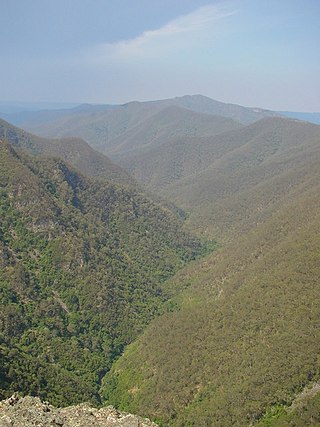
The Kanangra-Boyd National Park is a protected national park that is located in the Central Tablelands region, west of the Southern Highlands and Macarthur regions, in New South Wales, in eastern Australia. The 68,660-hectare (169,700-acre) national park is situated approximately 180 kilometres (110 mi) south-west of Sydney and is contiguous with the Blue Mountains National Park and the Nattai National Park. The park was established in 1969.

The Yengo National Park is a protected national park that is located in the Lower Hunter region of New South Wales, in eastern Australia. The 154,328-hectare (381,350-acre) park is situated 213 kilometres (132 mi) northwest of Sydney, 40 kilometres (25 mi) south of Cessnock, 121 kilometres (75 mi) northwest of Gosford, and 91 kilometres (57 mi) southwest of Newcastle. The average elevation of the terrain is 309 metres.
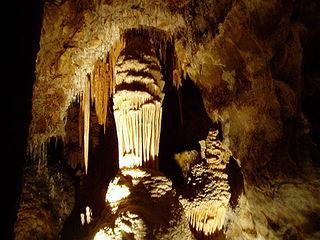
The Jenolan Caves are limestone caves located within the Jenolan Karst Conservation Reserve in the Central Tablelands region, west of the Blue Mountains, in Jenolan, Oberon Council, New South Wales, in eastern Australia. The caves and 3,083-hectare (7,620-acre) reserve are situated approximately 175 kilometres (109 mi) west of Sydney, 20 kilometres (12 mi) east of Oberon and 30 kilometres (19 mi) west of Katoomba. Dating back to 340million years ago, it is the oldest known and dated open cave system in the world.
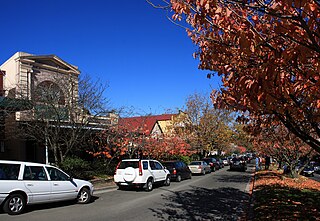
Leura is a suburb in the City of Blue Mountains local government area that is located 100 kilometres (62 mi) west of the Sydney central business district in New South Wales, Australia. It is one of the series of small towns stretched along the Main Western railway line and Great Western Highway that bisects the Blue Mountains National Park. Leura is situated adjacent to Katoomba, the largest centre in the upper mountains, and the two towns merge along Leura's western edge.
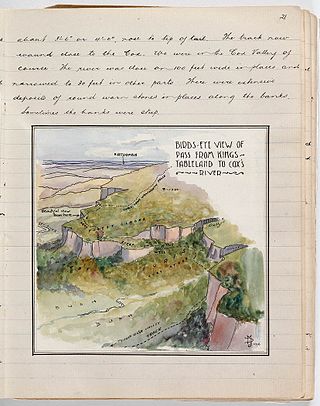
Myles Dunphy and Milo Dunphy were Australian conservationists who played an important role in creating the Australian wilderness movement.
Reginald Dawson Livermore is an Australian actor, singer, theatrical performer, designer, director, lyricist and writer and former television presenter.
Dowell Philip O'Reilly was an Australian poet, short story writer and politician.
Varuna is a Hindu god. Varuna may also refer to:

Eleanor Dark AO was an Australian writer whose novels included Prelude to Christopher (1934) and Return to Coolami (1936), both winners of the Australian Literature Society Gold Medal for literature, and her best known work The Timeless Land (1941).

Mount Solitary, a mountain that is part of the Blue Mountains Range, a spur off the Great Dividing Range, is situated within the Blue Mountains National Park, New South Wales, Australia. Mount Solitary is located approximately 100 kilometres (62 mi) west of Sydney, and a few kilometres south of Katoomba, the main town in the Blue Mountains.

The Grose River, a perennial river that is part of the Hawkesbury-Nepean catchment, is located in the Blue Mountains region of New South Wales, Australia.
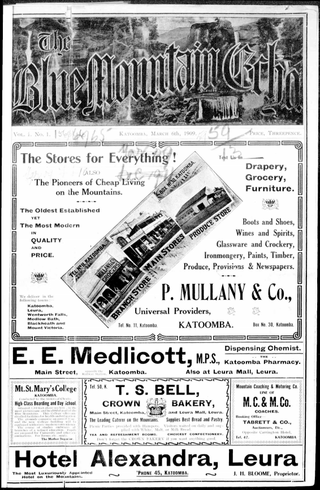
The Blue Mountain Echo, also published as The Blue Mountain Star, The Katoomba Daily, The Blue Mountains Daily, and The Blue Mountains Echo was a semi-weekly English language newspaper published in Katoomba, New South Wales, Australia.
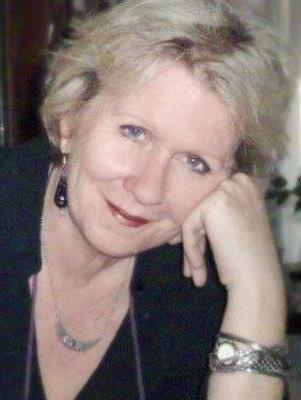
Gail Bell is an Australian author of short stories, two non-fiction books, travel writing, book reviews, critical essays and long form journalism. Her books and essays have won acclaim and prizes. She is represented by Selwa Anthony Author Management Pty Ltd.
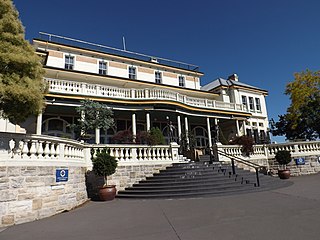
The Carrington Hotel is a heritage-listed former spa, hotel and power station and now hotel and public bar located at Katoomba Street, Katoomba in the City of Blue Mountains local government area of New South Wales, Australia. It was designed by John Kirkpatrick and Bosser in 1882; and by Edward Hewlett Hogben with Goyder Brothers in 1911–13; and built from 1882 to 1913 by F. Drewett in 1882; and by Howie, Brown and Moffit in 1912–13. It is also known as Great Western Hotel. The property is privately owned. It was added to the New South Wales State Heritage Register on 2 April 1999.

Lilianfels is a heritage-listed former villa and holiday house and now luxury hotel located at 10-16 Panorama Drive, Katoomba in the City of Blue Mountains local government area of New South Wales, Australia. The house was designed by Varney Parkes and was built in 1889 by Sir Frederick Darley, Chief Justice of NSW, as his mountain retreat. The property is privately owned. It was added to the New South Wales State Heritage Register on 2 April 1999.

Mount St Marys College and Convent is a heritage-listed former community arts centre, school and convent at 10-14 Civic Place, Katoomba, in the City of Blue Mountains local government area of New South Wales, Australia. It was designed by Nangle and Nurzey subsequently known as Henry E Budden & Nangle. and built from 1909 to 1946 by Michael Byrne. It is also known as The Renaissance Centre between 1985 and 1992. The property is privately owned and occupied. It was added to the New South Wales State Heritage Register on 21 November 2003.

Edward Hewlett Hogben was an Australian architect who had a prominent role in modernising the Carrington Hotel, Katoomba in 1911 when he designed the new facade for Sir James Joynton Smith. In partnership with the estate agent Alfred Craig, and then with the Goyder brothers, he played an influential role in the architectural development of both Katoomba and Leura between the wars. An early commission in 1905 was the design of the Kanowna guesthouses for John Connely in Wascoe Street, Leura. His most distinguished private home was the second Leuralla, built for Harry Andreas.

The Blue Mountains Conservation Society is an incorporated non-governmental organisation working to protect, conserve, and advocate for the natural environment of the Greater Blue Mountains World Heritage area in New South Wales, Australia. Its work includes the listing and protection of threatened species, populations and ecological communities of the Greater Blue Mountains and campaigns regarding climate change.

















